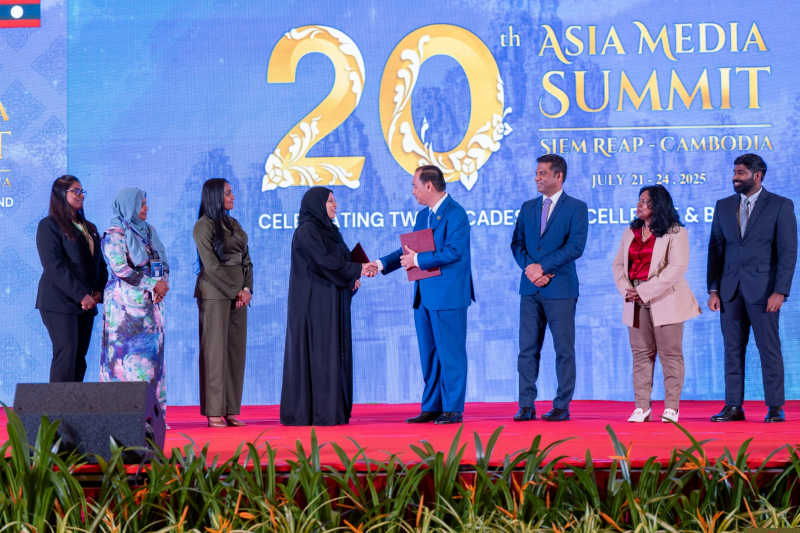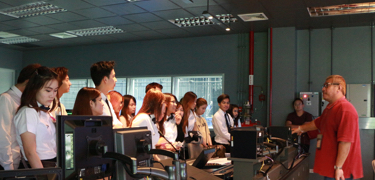Thai PBS participated in the 20th Asia Media Summit, organized by the Asia-Pacific Institute of Broadcasting Development (AIBD) and hosted by the Cambodian Ministry of Information. The summit was held in Siem Reap, Cambodia, between July 21-24, 2025, celebrating two decades of dialogues and collaborations among broadcasters and media outlets across the region. This year, digital transformation, artificial intelligence and misinformation were the main topics for panels and pre-workshops.
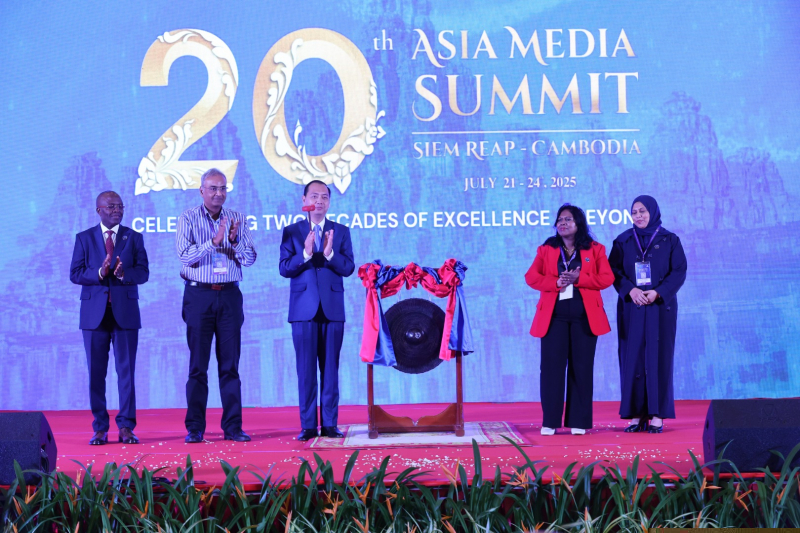
Digital content creator Peerachai Pasutan was assigned to be the Thai PBS delegate for the summit. During the digital newsroom masterclass, Peerachai gave a presentation on how Thai PBS had transformed itself in the era of AI. For instance, Thai PBS Verify officially launched in November 2024 to combat misinformation and cultivate fact-checking skills among the public. The Visual by Thai PBS was incarnated with the concept of data visualization to make it comprehensible to all: it implements both data journalism and data visualization in coverage on various complex topics. Another example presented in the masterclass was Policy Watch, an online platform that follows progress of public policies, laws and regulations in Thailand.


Despite the rise of UGC (user-generated content) on the Internet, Thai PBS continues to encourage citizen journalism and engaging stories from the locals. In the masterclass, Peerachai mentioned the news coverage of the 2024 blackchin tilapia outbreak in the country. Thanks to Thai PBS’s C-Site local news reporting platform, farmers and citizens located the areas invaded by the species. Therefore, Thai PBS has been able to cover the issue and follow up on the developments of the outbreak. These were some of Thai PBS’s milestones of protecting public interest, promoting media literacy and serving as a reliable institute to the people.

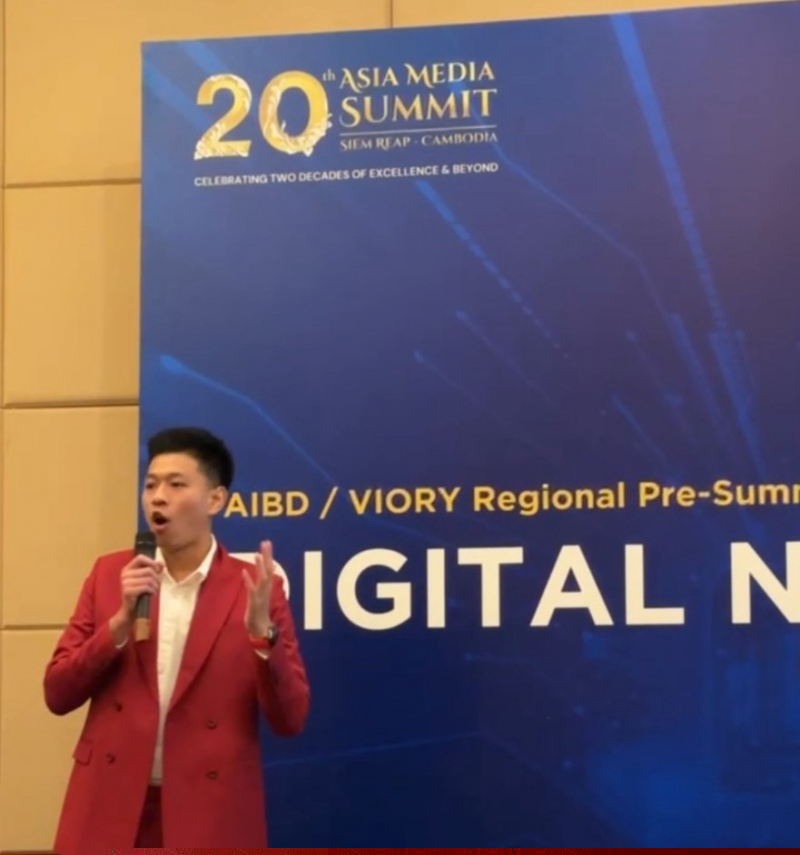
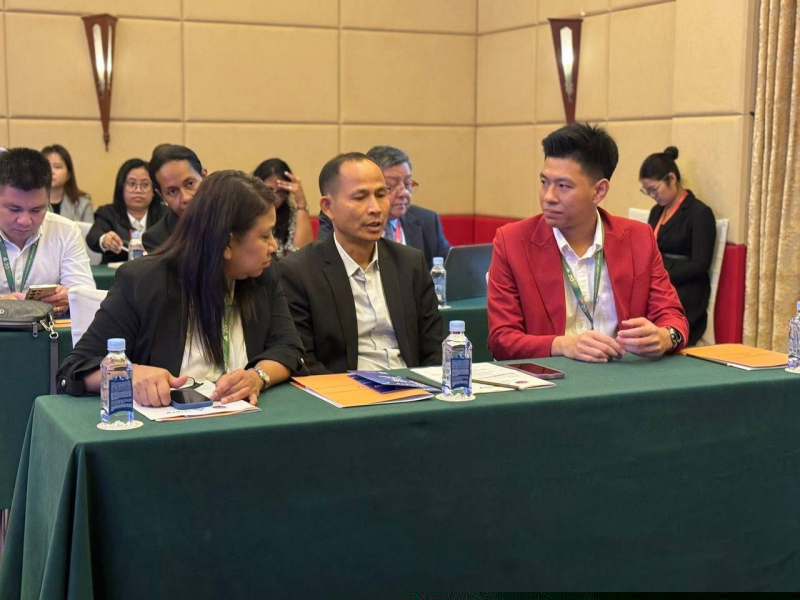
In addition, Thai PBS exchanged views and heard from media personnel from across Asia-Pacific during the 20th Asia Media Summit. In the digital newsroom masterclass, Zois Bekios Zannikos, Senior Verification Editor of Viory, proposed an idea of news verification that journalists should bear in mind: “when we verify, we trust nobody.” Journalists must authenticate the “source, date and location” of a news piece before presenting it to the public. Zannikos also emphasized that accuracy is as important as speed in news production.
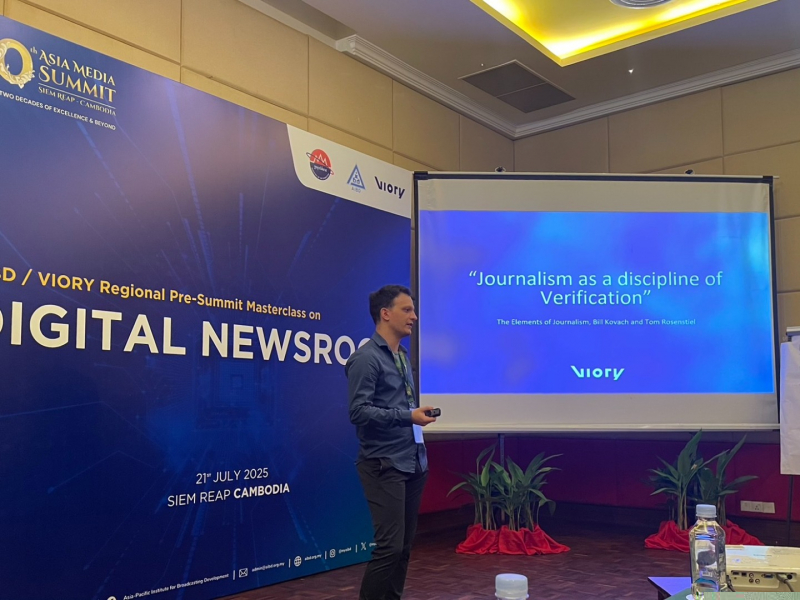
In a plenary session on bridging legacy media and innovation, Han Ju-Yeol, Deputy Director of South Korea’s KBS, talked about a benefit of using AI to recreate scenes for documentaries, reducing both budget and time. On the other hand, Zannikos stated in the aforementioned masterclass that all media outlets and broadcasters must be transparent and cautious in using AI in news reports, and that AI-generated content needs to be reviewed by humans. More importantly, media organizations should develop both in-house AI tools to prevent information leaks, while guidelines and ethical codes are indispensable both in the organization and public policy levels.

Apart from tackling misinformation and AI-generated content, media corporations must be responsible in their governance. For example, during a panel on sustainable strategies for legacy media, Ian Chew, Greenie Web’s Chief Executive Officer from Singapore, said that not only do the media have to raise public awareness on environmental issues, but they must be part of carbon footprint reduction. Ethical questions on corporate governance were raised in another panel where Jun Ogawa, International Affairs Coordinator of Japan’s BPO, took part. Ogawa pointed out that any media agency must impartially and honestly address any internal issues. Otherwise, they would affect the agency’s image and trust, as Fuji TV had witnessed after a scandal in early 2025.
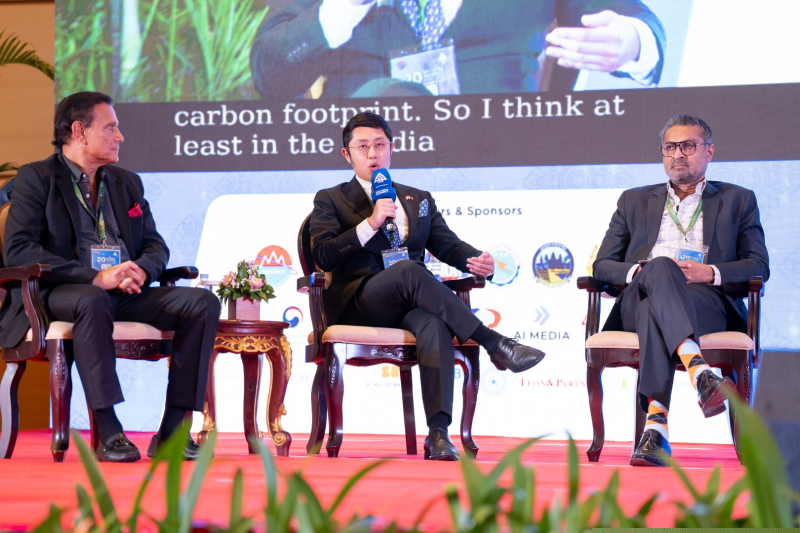
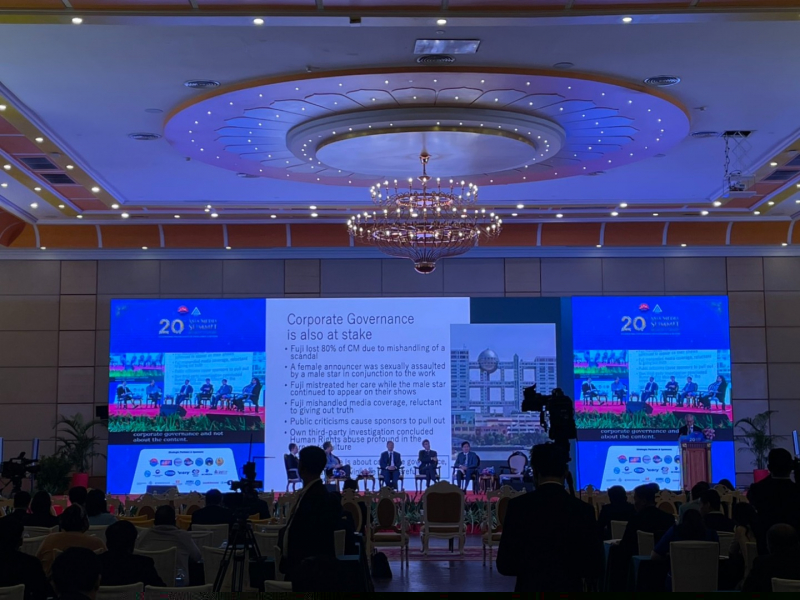
Facing numerous challenges, traditional media outlets and broadcasters are making efforts to transform themselves and remain reliable sources to the public. Despite the emerging trends of AI and rapid changes, the Asia Media Summit continues to unite media outlets in the Asia-Pacific to be connected, exchanging knowledge as well as exploring new technologies and endless possibilities.
